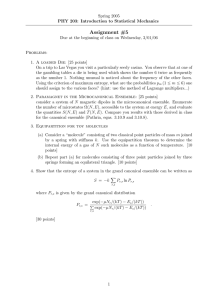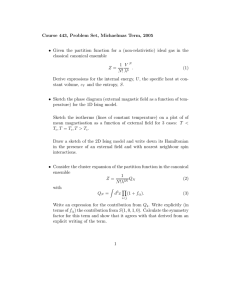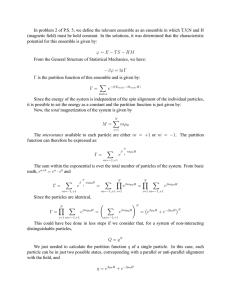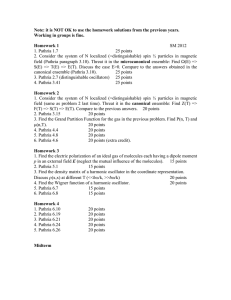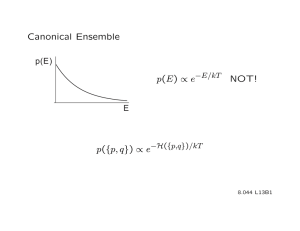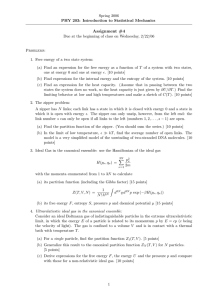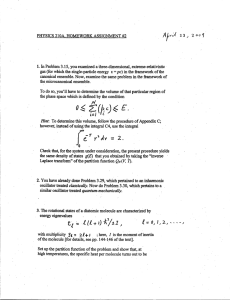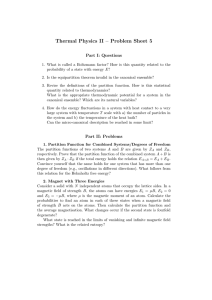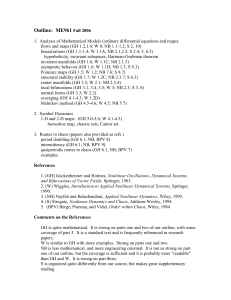Document 13554813
advertisement
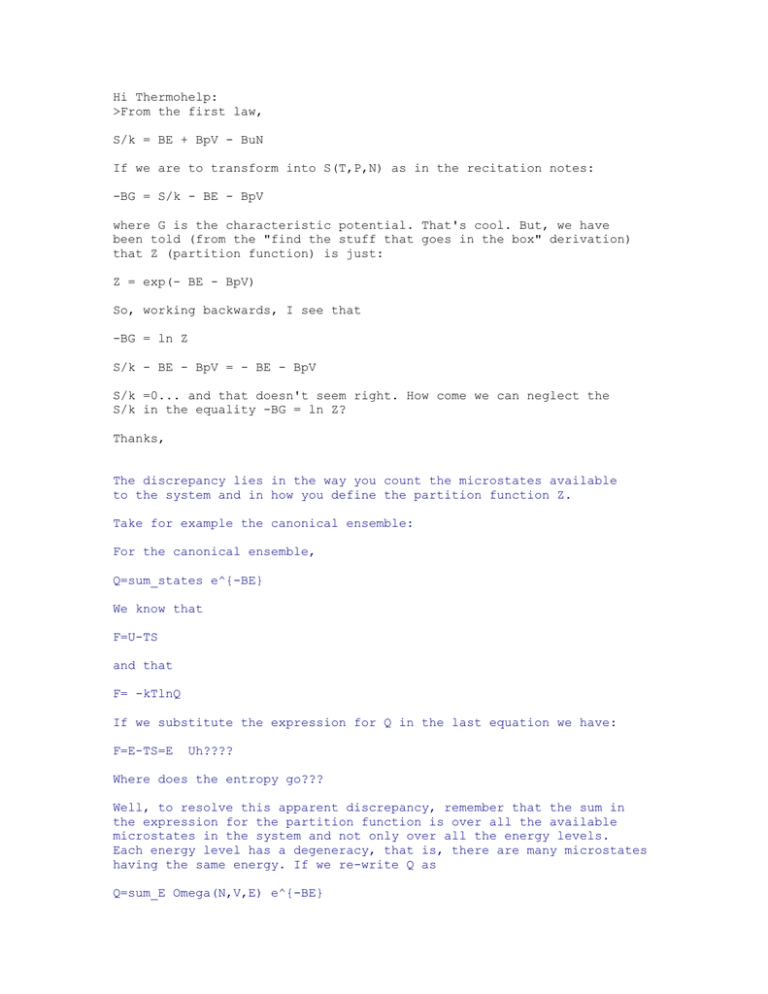
Hi Thermohelp: >From the first law, S/k = BE + BpV - BuN If we are to transform into S(T,P,N) as in the recitation notes: -BG = S/k - BE - BpV where G is the characteristic potential. That's cool. But, we have been told (from the "find the stuff that goes in the box" derivation) that Z (partition function) is just: Z = exp(- BE - BpV) So, working backwards, I see that -BG = ln Z S/k - BE - BpV = - BE - BpV S/k =0... and that doesn't seem right. How come we can neglect the S/k in the equality -BG = ln Z? Thanks,
The discrepancy lies in the way you count the microstates available to the system and in how you define the partition function Z. Take for example the canonical ensemble:
For the canonical ensemble,
Q=sum_states e^{-BE}
We know that
F=U-TS
and that
F= -kTlnQ
If we substitute the expression for Q in the last equation we have:
F=E-TS=E
Uh????
Where does the entropy go???
Well, to resolve this apparent discrepancy, remember that the sum in
the expression for the partition function is over all the available
microstates in the system and not only over all the energy levels.
Each energy level has a degeneracy, that is, there are many microstates
having the same energy. If we re-write Q as
Q=sum_E Omega(N,V,E) e^{-BE}
We now can expand
F=-kTlnQ
F=E-TS=-kT* sum_E ln Omega(N,V,E)
+E
Note that -kT* sum_E ln Omega(N,V,E) corresponds to -TS, that is
S=k sum_E ln Omega(N,V,E), which is Boltzmann's equation.
This means that the entropy of the system is directly related to the
degeneracy
of each of the energy levels accessible to it.
Note that Omega(N,V,E) is the partition function of the microcanonical
ensemble. The canonical ensemble is just a collection of many microcanonical
ensembles, or the microcanonical ensemble is a highly degenerate
canonical
ensemble in which there is only one energy level accessible to the
system.
For more details, see Hill, pg. 30
